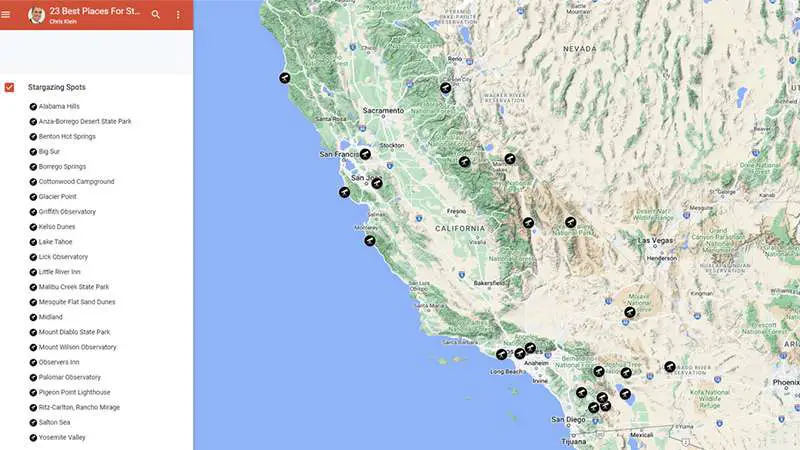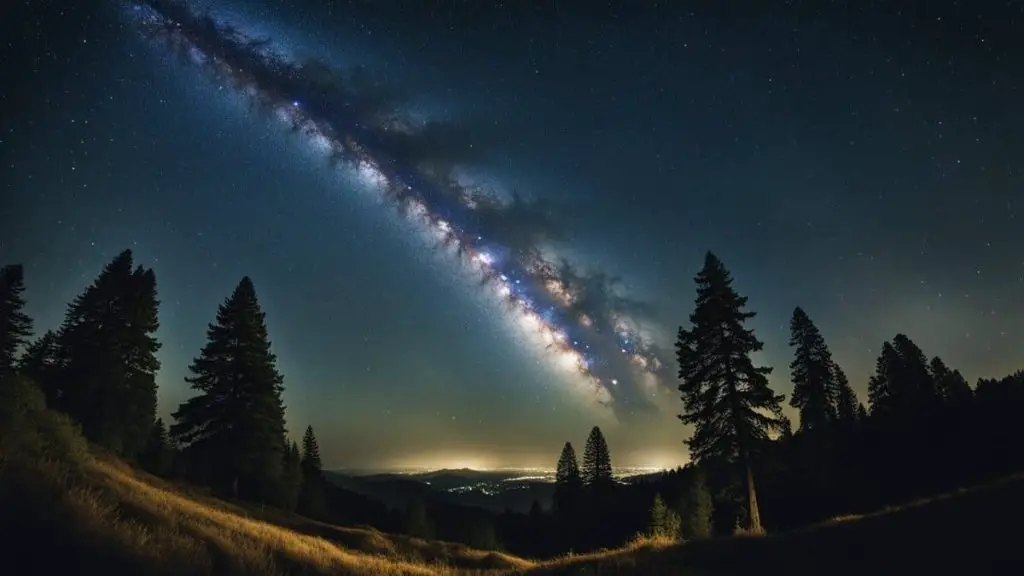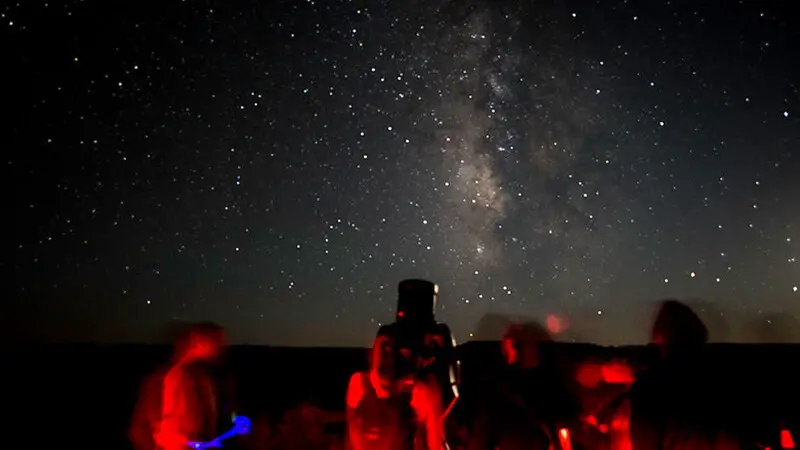In Northern California, a star-filled sky’s allure beckons to casual observers and serious stargazers. The region promises unparalleled views of constellations, planets, and the Milky Way, offering a celestial spectacle.
Yet, the challenge of light pollution and finding the perfect viewing spot can deter even the most enthusiastic. Cities and populated areas emit light that obscures the night sky, making it difficult to experience the true beauty of the stars. This problem is compounded by the confusion over selecting the right equipment and planning a stargazing trip that aligns with celestial events.
I’ve crafted this article to guide you through the enchanting world of stargazing Northern California. You’ll discover how to navigate light pollution, identify the best dark sky destinations, and choose equipment that enhances your experience. Plus, I’ll share tips on planning your trip around seasonal stargazing events and connecting with the stargazing community.
Key Things to Know
- Northern California’s dark skies are ideal for stargazing California, with less light pollution in certain areas.
- Essential stargazing equipment includes a good telescope and portable gadgets like astronomy apps.
- Planning your visit around new moon phases and meteor showers enhances the experience.
- Joining stargazing communities and attending star parties can enrich your stargazing journey.
Recommended For You
The Beauty of Stargazing Northern California’s Night Sky

During my stargazing adventures in Northern California, I’ve been mesmerized by the clarity of stars, Milky Way, and constellations.
Let’s explore why this region is a stargazer’s delight.
Understanding Light Pollution
Light pollution hides the night sky in many places.
Here’s what you need to know:
- From my experience, the glow from cities significantly dims the starlight, making celestial wonders harder to spot.
- Northern California has areas where there’s less light. That means better stargazing.
Dark Sky Destinations
Finding the perfect spot is vital, a lesson I’ve learned through many nights spent under the Northern California sky.
Check out these places:
- State Parks: They often have dark skies, like those found at Sugarloaf Ridge State Park.
- Hilltops and Shores: These spots offer unblocked views of the night sky.
Night Sky Photography Tips
As an avid night sky photographer, I recommend these tips for capturing the perfect celestial snapshot.
Try these tips:
- Use a tripod: It keeps your camera steady for clear photos.
- Long exposure: This setting captures more light, making the stars stand out.
Remember, the night sky changes, so go out, look up, and enjoy the view!
Best Stargazing Spots in Northern California

Northern California offers an array of spectacular locations for stargazing that cater to both the casual observer and the avid astronomer.
You’ll find the perfect backdrop for a celestial spectacle, from the clear skies over high-altitude lakes to the darkness of remote deserts.
Lake Tahoe and the Surrounding Area
During my visit to Lake Tahoe and its surrounding area, the beauty of the night sky was unparalleled, offering a unique stargazing experience.
- Clearly Tahoe: Experience stargazing from the unique vantage point of a transparent kayak on Lake Tahoe’s pristine waters.
- Sierra Nevada Mountains: The high elevation and clear skies make locations around Lake Tahoe ideal for spotting constellations and shooting stars.
Mendocino and the Rugged Coastline
- Mendocino: Escape to this coastal haven where the dark skies allow for breathtaking views of the Milky Way.
- Pigeon Point Lighthouse: Join a nighttime tour at the lighthouse to enjoy stargazing along the shoreline, where the ocean meets the stars.
FREE STARGAZING CHECKLIST
My 5-page Stargazing Checklist will enhance your astronomical observations.
Follow this free checklist to navigate the night sky with confidence, clarity, and a sense of preparedness for a rewarding stargazing experience.

Remote Deserts and Parks
- Anza-Borrego Desert State Park: The nights I spent camping in Anza-Borrego Desert State Park were unforgettable, filled with meteor showers and constellations sprawling across the vast sky.
- Joshua Tree National Park: With its renowned dark skies, Joshua Tree is a haven for stargazers and hosts night sky programs.
Observatories and Public Viewing Sites
- Lick Observatory: Situated atop Mount Hamilton, the observatory offers public programs to look deeper into space.
- Palomar Observatory: Although located farther south, it’s worth mentioning for its exceptional viewing conditions and public tours.
Each location provides its unique touch to your stargazing adventure, from the shimmery reflection of stars on the water at Lake Tahoe to the historical aura of Pigeon Point Lighthouse.
Whether you choose the serene desert landscape or the peaks of observatories, you’re set for an unforgettable starry encounter.
Read my dedicated article on the Best Stargazing in California for a complete list of the top spots.

Essential Stargazing Equipment

Before you start your stargazing journey in Northern California, you need the right equipment.
I’ll guide you through selecting a telescope and introduce you to portable gadgets to enhance your experience under the stars.
Choosing the Right Telescope
A great telescope can be your best friend when you stargaze. It lets you see planets, stars, and galaxies up close. But how do you pick one?
- Aperture: Bigger allows more light and better views. Look for at least a 2.8-inch aperture.
- Type: Refractors are suitable for clear images, while reflectors are usually more affordable. A good guide can help you understand the differences.
- Mount: Go for a stable mount – it makes tracking celestial objects easier.
Portable Stargazing Gadgets
Next to a telescope, there are gadgets to make your stargazing smooth and fun.
- Apps: Your phone can be a mini planetarium with astronomy apps. They help identify what you’re looking at in the sky.
- Binoculars: A great complement to telescopes, especially for beginners. They’re easy to carry and use.
- Headlamp with red light: It keeps your night vision sharp while you look at your star maps or equipment.
Remember, the right gear can turn a good stargazing night into a great one!
Planning Your Northern California Stargazing Trip

When you plan to stargaze in Northern California, picking the right campsite and knowing the seasonal events are critical.
Camping and Campsites for Star Lovers
Northern California offers many campgrounds where you can enjoy the stars.
Some top picks for star lovers include:
- New Melones Lake: Just a short drive from the Bay Area, it’s the third-largest reservoir in California, with clear skies perfect for stargazing. Find out more about stargazing at New Melones Lake.
- Public observatories: They often have rooms and facilities, making your stargazing adventure both comfy and informative.
Remember to check campsite availability and book in advance, especially for popular spots!
Seasonal Stargazing Events
Plan your trip around events that make the night sky even more special:
- Star Parties: These are held throughout the year at various sites. A quick search can show you upcoming events.
- Meteor Showers: Events like the Perseids in summer can highlight your trip.
Always check the event schedules early, as they can be popular and might require registration.
Stargazing Etiquette and Conservation

When you look up at the dark night sky in California, remember that keeping it that way requires each stargazer’s effort. Here are some ways you can help.
Preserving the Dark Skies
The Golden State offers some amazing views of the stars, especially in areas surrounded by a protective ring of hills that block out city lights.
To keep our dark skies dark:
- Turn off car lights and use red flashlights to keep the area dark.
- Stay on trails to help protect the surrounding environment and wildlife.
Responsible Stargazing Practices
Stargazing is more than just looking up; it’s about respecting the place and the experience.
Here are some guidelines:
- Always pick up your trash, including small items like bottle caps or wrappers. On every stargazing trip, I make it a point to leave no trace, ensuring that our beautiful stargazing sites remain pristine for others to enjoy.
- Use areas with easy accessibility, like designated parking lots, and take advantage of onsite restrooms.
Following these simple steps can make a big difference. Remember, it’s not just about the view you get but also about the legacy you leave behind for future star enthusiasts.
Connecting With the Stargazing Community

Northern California offers vibrant stargazing communities and programs that help you gaze at the stars and learn more about the night sky.
Star Parties and Astronomy Clubs
- Star Parties: These are get-togethers for stargazers like you. Attending star parties has been a highlight of my stargazing experience. I’ve met fellow enthusiasts and shared unforgettable celestial sightings. Groups often meet at places like Point Reyes National Seashore or Big Sur to observe the night sky together.
- Astronomy Clubs: Joining a club can be a great way to meet other stargazers. In California, clubs hold regular meetings and public viewings, sharing knowledge and equipment.
Educational Resources and Programs
- Education: From Los Angeles to San Diego, many observatories offer educational programs for people of all ages.
- Public Viewing: Observatories in Northern California provide telescopes for public viewing. For example, the Community Observatory is a prime location for this.
Pro Tips:
- Plan your stargazing around the new moon when the sky is darkest.
- Use a light pollution map to find the darkest skies near you.
- Check the Bortle Scale to gauge the darkness of your stargazing location.
You can become a part of the stargazing community with these steps. Enjoy the stars!
Frequently Asked Questions
How can I predict the best nights for stargazing?
The best nights for stargazing are those with clear skies and low humidity. Using weather apps and astronomical forecasts can help you predict these conditions. Planning your outings around the new moon phase will ensure the darkest skies for the best celestial views.
What should I wear for a night of stargazing?
For a comfortable night of stargazing, dress in layers to adapt to dropping temperatures. A warm jacket, hat, and gloves are essential, especially in remote areas or during the cooler seasons. Comfort is critical to enjoying the night sky for extended periods.
Can I participate in stargazing events without any equipment?
Yes, you can participate in stargazing events without any equipment. Many events and star parties provide telescopes for public use. Additionally, these gatherings offer an excellent opportunity to learn from more experienced astronomers and get a closer look at celestial objects.
TL;DR
- Northern California offers prime stargazing spots with less light pollution, ideal for observing stars, the Milky Way, and constellations.
- Essential equipment for stargazing includes a good telescope, portable gadgets like astronomy apps, and a tripod for night sky photography.
- Best viewing experiences can be found in dark sky destinations like Lake Tahoe, Mendocino, and remote deserts, as well as at observatories.
- Planning your trip around new moon phases and meteor showers and joining local stargazing communities can significantly enhance your experience.
- Responsible stargazing practices and preserving dark skies are crucial for maintaining the beauty of night sky observation for future generations.
Your curiosity about the night sky and stargazing adventures fuels this community. While I’ve shared my insights, there’s always more to explore together.
I’d love to hear from you if you have questions or want to share your stargazing experiences. Drop your thoughts in the comments below.




